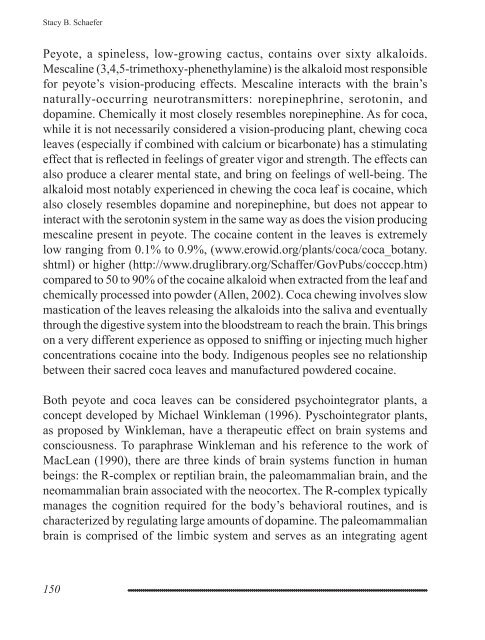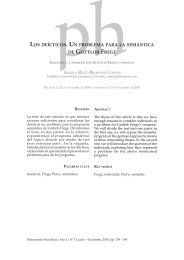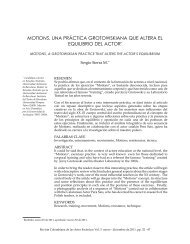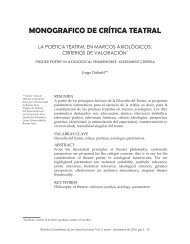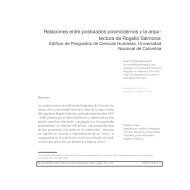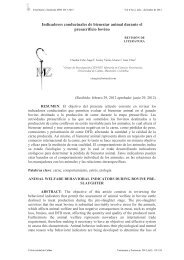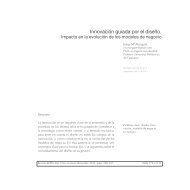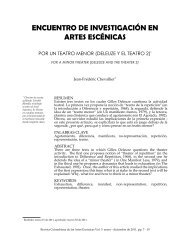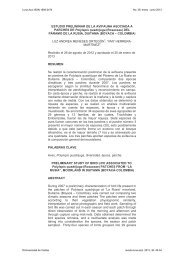shamans, peyote, and coca sacraments: a path
shamans, peyote, and coca sacraments: a path
shamans, peyote, and coca sacraments: a path
You also want an ePaper? Increase the reach of your titles
YUMPU automatically turns print PDFs into web optimized ePapers that Google loves.
Stacy B. Schaefer<br />
Peyote, a spineless, low-growing cactus, contains over sixty alkaloids.<br />
Mescaline (3,4,5-trimethoxy-phenethylamine) is the alkaloid most responsible<br />
for <strong>peyote</strong>’s vision-producing effects. Mescaline interacts with the brain’s<br />
naturally-occurring neurotransmitters: norepinephrine, serotonin, <strong>and</strong><br />
dopamine. Chemically it most closely resembles norepinephine. As for <strong>coca</strong>,<br />
while it is not necessarily considered a vision-producing plant, chewing <strong>coca</strong><br />
leaves (especially if combined with calcium or bicarbonate) has a stimulating<br />
effect that is re� ected in feelings of greater vigor <strong>and</strong> strength. The effects can<br />
also produce a clearer mental state, <strong>and</strong> bring on feelings of well-being. The<br />
alkaloid most notably experienced in chewing the <strong>coca</strong> leaf is <strong>coca</strong>ine, which<br />
also closely resembles dopamine <strong>and</strong> norepinephine, but does not appear to<br />
interact with the serotonin system in the same way as does the vision producing<br />
mescaline present in <strong>peyote</strong>. The <strong>coca</strong>ine content in the leaves is extremely<br />
low ranging from 0.1% to 0.9%, (www.erowid.org/plants/<strong>coca</strong>/<strong>coca</strong>_botany.<br />
shtml) or higher (http://www.druglibrary.org/Schaffer/GovPubs/cocccp.htm)<br />
compared to 50 to 90% of the <strong>coca</strong>ine alkaloid when extracted from the leaf <strong>and</strong><br />
chemically processed into powder (Allen, 2002). Coca chewing involves slow<br />
mastication of the leaves releasing the alkaloids into the saliva <strong>and</strong> eventually<br />
through the digestive system into the bloodstream to reach the brain. This brings<br />
on a very different experience as opposed to snif� ng or injecting much higher<br />
concentrations <strong>coca</strong>ine into the body. Indigenous peoples see no relationship<br />
between their sacred <strong>coca</strong> leaves <strong>and</strong> manufactured powdered <strong>coca</strong>ine.<br />
Both <strong>peyote</strong> <strong>and</strong> <strong>coca</strong> leaves can be considered psychointegrator plants, a<br />
concept developed by Michael Winkleman (1996). Pyschointegrator plants,<br />
as proposed by Winkleman, have a therapeutic effect on brain systems <strong>and</strong><br />
consciousness. To paraphrase Winkleman <strong>and</strong> his reference to the work of<br />
MacLean (1990), there are three kinds of brain systems function in human<br />
beings: the R-complex or reptilian brain, the paleomammalian brain, <strong>and</strong> the<br />
neomammalian brain associated with the neocortex. The R-complex typically<br />
manages the cognition required for the body’s behavioral routines, <strong>and</strong> is<br />
characterized by regulating large amounts of dopamine. The paleomammalian<br />
brain is comprised of the limbic system <strong>and</strong> serves as an integrating agent<br />
150


